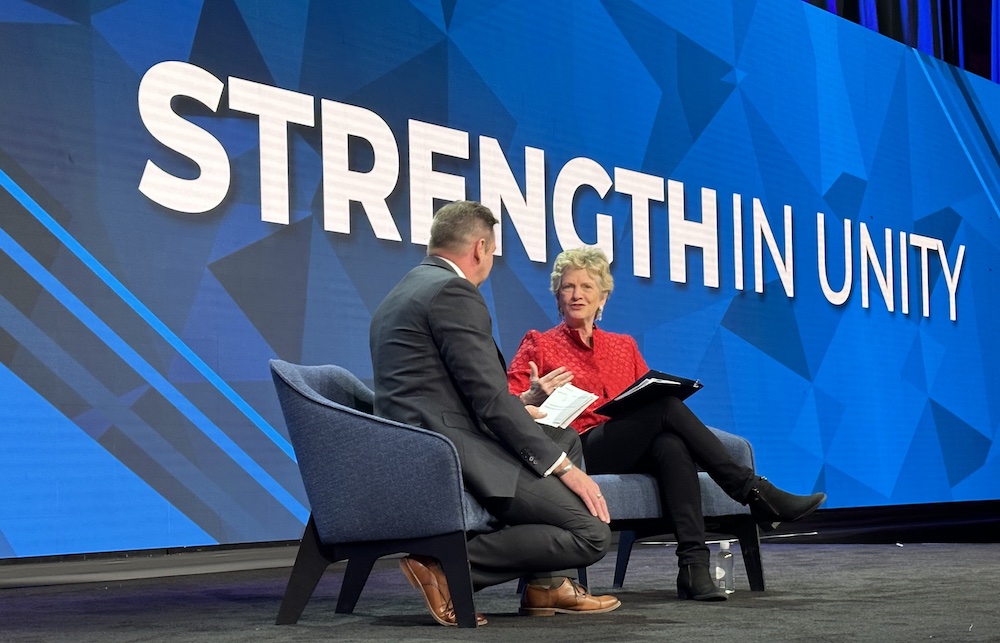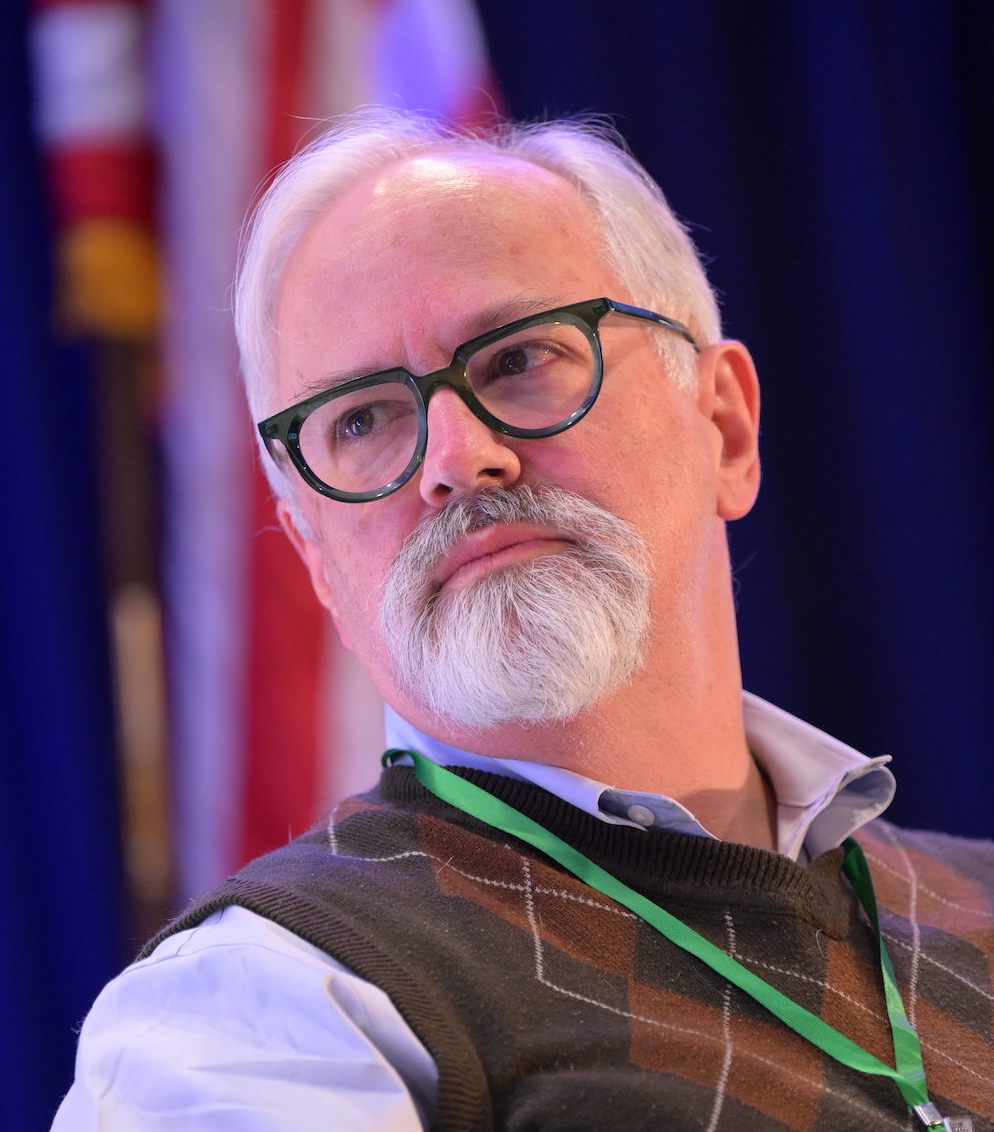
- Details
- By Brian Edwards
- Native Contracting
LAS VEGAS — It’s no accident that federal contracting opportunities for Native American businesses are surging, according to General Services Administration (GSA) Administrator Robin Carnahan.
In a one-on-one conversation with Tribal Business News at the 2024 Reservation Economic Summit (RES) earlier this week, Carnahan detailed a 70% increase in obligated contracts for tribal entities over the past five years — and the GSA’s efforts to support that growth. But with only about a quarter of tribes currently participating in federal contracting, she acknowledged there's more work to be done.
“We're doing something right,” Carnahan said. “(But) we were (only) one side of the story. The other side of the story is that we have to have Native vendors who are engaged and want to participate in this. And so it's our job to make it easier for folks to do that.”
During the conversation, Carnahan explored the GSA's strategy to streamline the contracting process, boost Native vendor participation, and unlock new economic opportunities for tribal nations.
This interview has been edited for clarity and length.
GSA contracting vehicles are used by federal agencies to procure more than $90 billion in goods and services. What’s it like to have such a big checkbook?
Well, it's not quite that simple. But look, we have the biggest real estate portfolio in the country, we're one of the biggest vehicle fleets in the country, (and) one of the biggest power purchasers in the country along with the Defense Department.
So what's interesting right now is that we have something that's kind of unusual, and that is momentum and money at the same time to work on really important things. And so when we're thinking about how we invest in America, it's about investing in American manufacturing and American jobs.
Want more Native contracting news? Get it here from TBN.
The President always (says) when he hears about green and clean (energy), he just thinks about jobs. We do too, and we’re doing some of this in Indian Country, as well.
I always talk about it as a triple win — it's great for job creation and it’s great for saving money for taxpayers, because we're reducing energy costs and making (things) more efficient. And the third is, it is obviously good for the environment and communities and our kids. So it really is a smart thing to do.
There’s certainly been a push by the federal government to spur investment in clean energy in Indian Country. What are some other ways you’re supporting Native businesses and tribal entities?
We've got another pot of money from the Bipartisan Infrastructure Law for ports of entry … on the northern and southern borders. And interestingly, about 260 miles of our international borders are (in) Indian Country. And one, in particular, we spend a lot of time on is up in Minnesota, the Grand Portage (crossing). And I understand (we) just entered into a contract recently with the Native company for construction management. So that's a $7 million contract that just got bought.
Let me ask you. You’ve been on this job for about three years. What have you learned about Indian Country?
I learned a lot. We have a terrific team that is focused on how we can better interact with tribal nations. The obligations that the US has to the tribal nations have not always been kept. We need to acknowledge that reality and be clear about doing better. And I think the team is taking that really seriously. And we've got a lot of folks from GSA that are here this year, and they were here last year as well. So we're trying to double down on consultations and be really intentional about engagement.
The other is, particularly when it comes to PBS (Public Service Building), being more intentional about projects, like these ones on the border that I mentioned — both engaging really early with the tribal nations that are involved in all of this, but also seeing if they can be part of the solution.
These are things that I know you talked about last year at RES.
The team's doing it.
So there’s been follow through, right?
Yeah. How about that?
In your fireside conversation with National Center CEO Chris James this afternoon, I understand you’re going to talk about $25 billion in obligated contracts for Native entities. That’s a big number, but I’m curious, what kind of growth does that represent?
Over the last five years, it’s 70% growth — went from $15 billion to $25 billion. And year-on-year growth from last year, it went from $21 (billion) to $25 (billion). So that's just under 20% or so.
Really? That's pretty good. Corporate America would certainly like that kind of revenue growth.
Yeah, I’d say we're doing something right. And by the way, we were (only) one side of the story. The other side of the story is we have to have Native vendors who are engaged and want to participate in this. And so it's our job to make it easier for folks to do that. And so we're doing that in a bunch of different ways.
Part of it is about outreach and training to the vendor community to make it more understandable, because it's complicated, and help people through that process. And then the other is training for the buyers on the buyer side to make it so contracting officers within the government can easily find who the native vendors are and understand why it's a good thing to use native. So the education goes both ways.
How are you going to build on this kind of growth? I saw some research from the Center for Indian Country Development that only about one in four tribes is active in federal contracting. How do you move the needle?
Look, nobody wants to waste their time, right? Small businesses in particular, but any business wants to do something that feels like it's going to succeed. And so the more we can simplify that interaction, get them on schedules, and make it possible, the more we're gonna have success stories to be able to tell.
When I talk to Native businesses about federal contracting, one thing that comes up is the challenge of navigating online systems. I’m guessing that’s a challenge for federal buyers, too.
When you make it hard, and there's a lot of friction in doing something, people stop doing it. So we're trying to get rid of friction, particularly for entities that want to buy tribal or want to buy Native products and services. If we have an indicator on there, and they can easily sort through that, like that seems pretty simple. But it's massive in terms of simplifying and getting rid of friction to be able to do this for a contracting officer, who has a lot of work to do.
What's the work that still needs to be done?
Well, look, you said it yourself, one in four Native businesses is doing this work. We want to up that number. We want to up the number of participants that are involved, but we also want to up the number of our sales. That's about being out, communicating, making it easy, getting rid of friction, and doing the work. In the end, it makes us all stronger.
